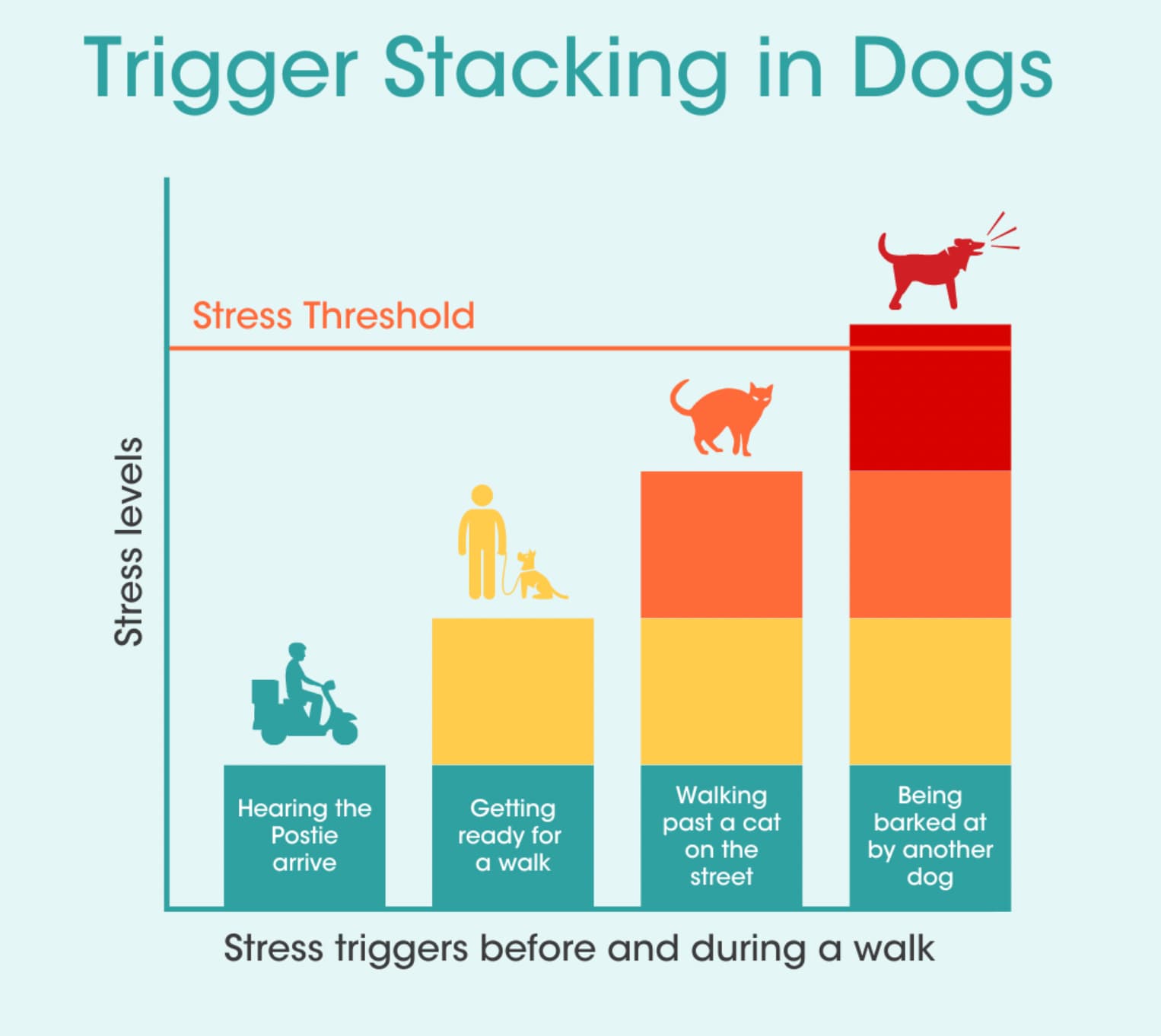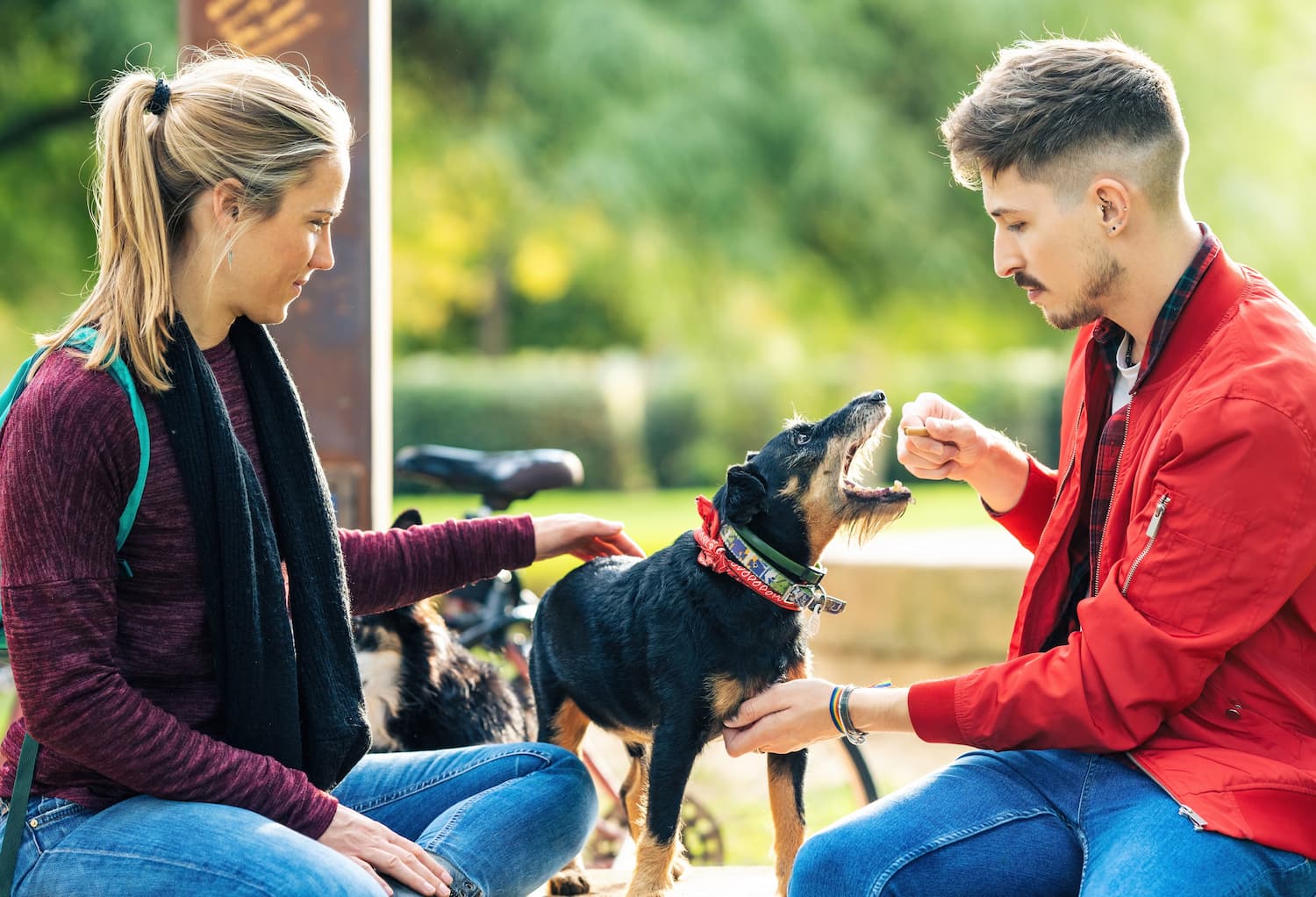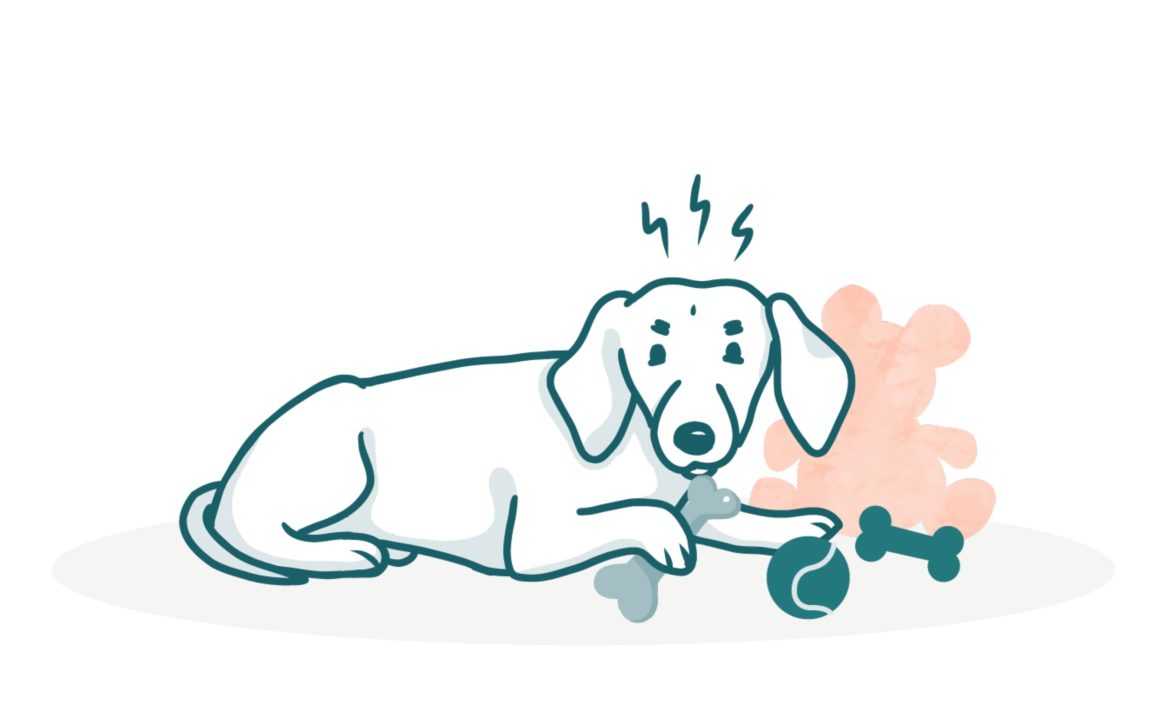The post covid world has created a very different population of dogs, who are anxious, reactive and poorly socialised. As a result, we’ve all seen an increase in pets with problems and you guys voted to learn more about reactivity and how to calm an anxious dog.
What is reactivity in dogs?
Reactivity refers to when a dog overreacts to a certain stimulus. Reactivity is commonly mistaken for aggression, and there is a big misconception when a dog is reactive this only refers to reacting to other dogs. The reality is that a dog can be reactive to anything, cars, strangers, cats and dogs are just the most common trigger.
Reactivity is much more complicated than it seems, understanding the triggers or causes for the reactivity is the first step to managing it. Reactivity can be caused by almost anything; genetics, training, previous experiences, lack of socialisation, or a combination of things.
Whilst reactivity is not something that can be ‘cured’ it can be managed, and we can help our dogs feel safe and decrease their likelihood of reacting. A crucial thing to remember is that dogs show aggression when they reach their threshold, and just because a dog shows signs of aggression this does not mean they’re aggressive.
Trigger stacking: what it means
Each dog has their own threshold, some dogs are much less likely to react for the same reasons that another dog is likely to react. For example, if one dog was raised being very well socialised and taught how to be comfortable in new environments they are less likely to react when visiting a new park as opposed to a dog who was not socialised or had a traumatic adolescence.
We can measure a dog’s threshold with triggers, trigger stacking is often what will cause a reaction. Trigger stacking is when several separate events happen at different times or one after the other and the dog does not have time to calm down or return to base-level arousal causing a reaction that likely wouldn’t have happened if the events occurred individually.
 In the example above you can see a prime example of how trigger stacking on a walk occurs, whilst the initial visit from a postie would have triggered them it wouldn’t have caused a reaction, but in the next 20 minutes they have to cope with the stress of getting ready for a walk, walking past a cat and then having a dog bark at them and it all becomes too much so they react. A reaction is an act of desperation, they have reached a point where any fiddle or freeze signals were missed or ignored or their brain switched to danger mode and they felt they had no other choice.
In the example above you can see a prime example of how trigger stacking on a walk occurs, whilst the initial visit from a postie would have triggered them it wouldn’t have caused a reaction, but in the next 20 minutes they have to cope with the stress of getting ready for a walk, walking past a cat and then having a dog bark at them and it all becomes too much so they react. A reaction is an act of desperation, they have reached a point where any fiddle or freeze signals were missed or ignored or their brain switched to danger mode and they felt they had no other choice.
Another component of reactivity to consider is what can be referred to as ‘sensitivity’. A lot of dogs can be labelled as reactive when the root of their problem is sensitivity – some dogs simply just don’t like stuff; whether it be other dogs, raised voices or cars. Sensitivity creates a reaction that is milder like cowering, attention seeking, shaking or whimpering. Often when sensitivity is ignored it can create reactivity, especially considering many of the potential causes are the same.
Reactivity management is individual to the dog and needs to be treated as such. This is why for any dog experiencing issues with sensitivity or reactivity their management plan needs to be different and should be structured by a certified force-free/positive reinforcement trainer. The goal is to make our dogs feel safe and comfortable so they don’t feel the need to react or get passed their threshold.

How to reduce reactivity in dogs:
Tips when meeting or approaching an anxious dog
- Communicate with the owner about what makes them anxious and determine what steps you can take to minimise this.
– Do they not like when people wear hats or sunglasses?
– What behaviour do they display? E.g. Aggression, shyness?
– Do they take treats when they’re nervous? - Let them come to you. Give the dog time to get comfortable before approaching or communicating with them.
- Have plenty of treats!
- Maintain calmness, from you and the Owner.
- Choose a suitable environment. Ask the Owner where they are most comfortable and relaxed and meet there if suitable
Bonding with triggered or anxious dogs
Anxiety in dogs is at an all-time high thanks to the covid lifestyle, and as Sitters, it can often be hard to win over a dog who is attached at the hip to its owner. Often dogs who are extremely attached to their owner can be less comfortable around new people.
The endless reasons that cause anxiety in dogs mean that each requires an individual approach to bond with the dog. The basic rule of thumb when it comes to anxious dogs is to do it at their pace, which is often going to be extremely slow. It is crucial to not be overbearing and force any affection or situation on them, that will only increase their anxiety. You need to let them come to you.
What does ‘let them come to you’ mean?
Take it as an extreme, take no action until the dog has invited you to do so. When a dog is anxious before they get comfortable it will go through a phase of curiosity where they are still making up its mind about you. It is crucial to apply this mentality to the entire relationship with the dog, not just the initial greeting. You need to be able to understand and identify the difference between seeking information and seeking attention.
When a dog is seeking information it might be in your personal space, sniffing, licking and watching you but this is not a signal they’re comfortable just yet. During this time it’s important to not react, just stay calm, still and quiet allowing them to check you out. If they’re doing well you can throw some treats their way or if they’re willing offer them in your hand – this helps create a positive association.
When a dog seeks attention or affection they will display very different behaviour, and with anxious dogs, this might not always occur so there are two ways to measure if they’re comfortable. The first is when they seek attention, they will be nudging you, possibly whining, pawing at you, sitting on your lap or trying to initiate play. These are all signs they’re inviting you to make contact so it’s okay to initiate contact, but important to keep rewarding them and taking breaks making sure they come back for more before you give it to them! The second way to tell is if they return to their routine or activities, this indicates that they’re comfortable with you being there, but they don’t want attention or cuddles and this is perfectly normal for lots of dogs.
The initial meeting is crucial as it can set the tone for your relationship, so starting off on the right paw needs to be a top priority. Moving forward from the initial meeting, you need to continue to build trust, it’s very rare that after one positive interaction an anxious dog will be won over. This can be done by continuing to go at their pace, only giving them affection with them when invited and beginning to initiate some of their favourite activities. This can mean playing fetch, feeding them treats, playing in the yard or even as simple as going on a walk. Keep in mind their arousal levels at all times to keep them calm and happy.
To continue building the bond it is important to keep every interaction as positive as possible and on their terms when safe to do so. Whilst earning trust is the first step is only the beginning of building a relationship it takes time for a dog to let their guard down. When considering taking on a new client with anxiety, discuss with the Owner the best course of action to build their trust.
The best course of action to suggest is multiple Meet & Greets, make the effort to spend time with the Owner and pet several times before the booking starts – especially for long-term stays. If the booking is for day care or dog walks encourage the Owner to book times when they’re available so you can work together to earn the dogs trust and work up to do the walk or daycare on your own when the dog is comfortable.

